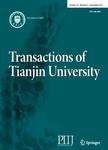Effects of Vibration Technology and Polyvinyl Acetate Emulsion on Microstructure and Properties of Expanded Polystyrene Lightweight Concrete
Effects of Vibration Technology and Polyvinyl Acetate Emulsion on Microstructure and Properties of Expanded Polystyrene Lightweight Concrete作者机构:School of Civil EngineeringTianjin University Civil Engineering InstituteHebei University of Technology China Academy of Building Research
出 版 物:《Transactions of Tianjin University》 (天津大学学报(英文版))
年 卷 期:2009年第15卷第2期
页 面:145-149页
核心收录:
学科分类:08[工学] 081304[工学-建筑技术科学] 0805[工学-材料科学与工程(可授工学、理学学位)] 080502[工学-材料学] 0813[工学-建筑学]
基 金:Supported by Tianjin Natural Science Foundation (No.06YFJMJC05900) Science and Technology Key Project of Hebei Province (No.05213810)
主 题:expanded polystyrene(EPS) lightweight concrete vibration with pressure polyvinyl acetate microstructure mechanical properties thermal properties
摘 要:To prevent expanded polystyrene (EPS) beads from rising up to the surface in the molding process of EPS lightweight concrete, vibration with pressure was applied and the polyvinyl acetate (PVA) emulsion was adopted to improve its mechanical properties. The mechanical properties, thermal properties and durability of EPS lightweight concrete were tested. The microstruetures of EPS lightweight concrete were observed by scanning electron microscope (SEM). Vibration with pressure reduces the number of small cracks. The 180 d compressive strength and flexural strength increase obviously as a large amount of PVA was added. The mixed amount of PVA has no obvious influence on the thermal performance when it is not more than 10% of the cement. Vibration with pressure and surface modification of EPS beads by PVA improve the combination of EPS beads with cement stone and the mechanical properties of EPS lightweight concrete.



